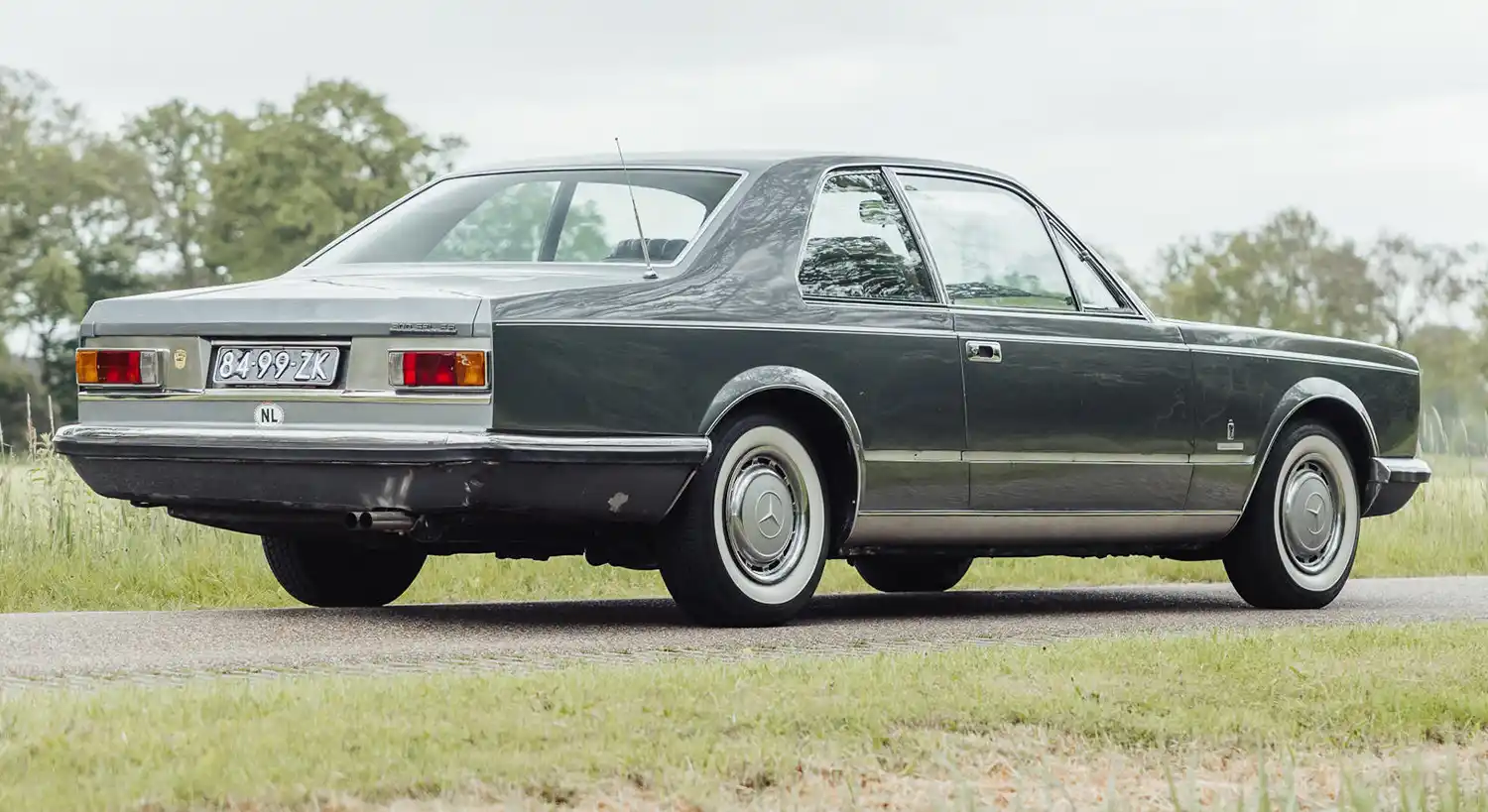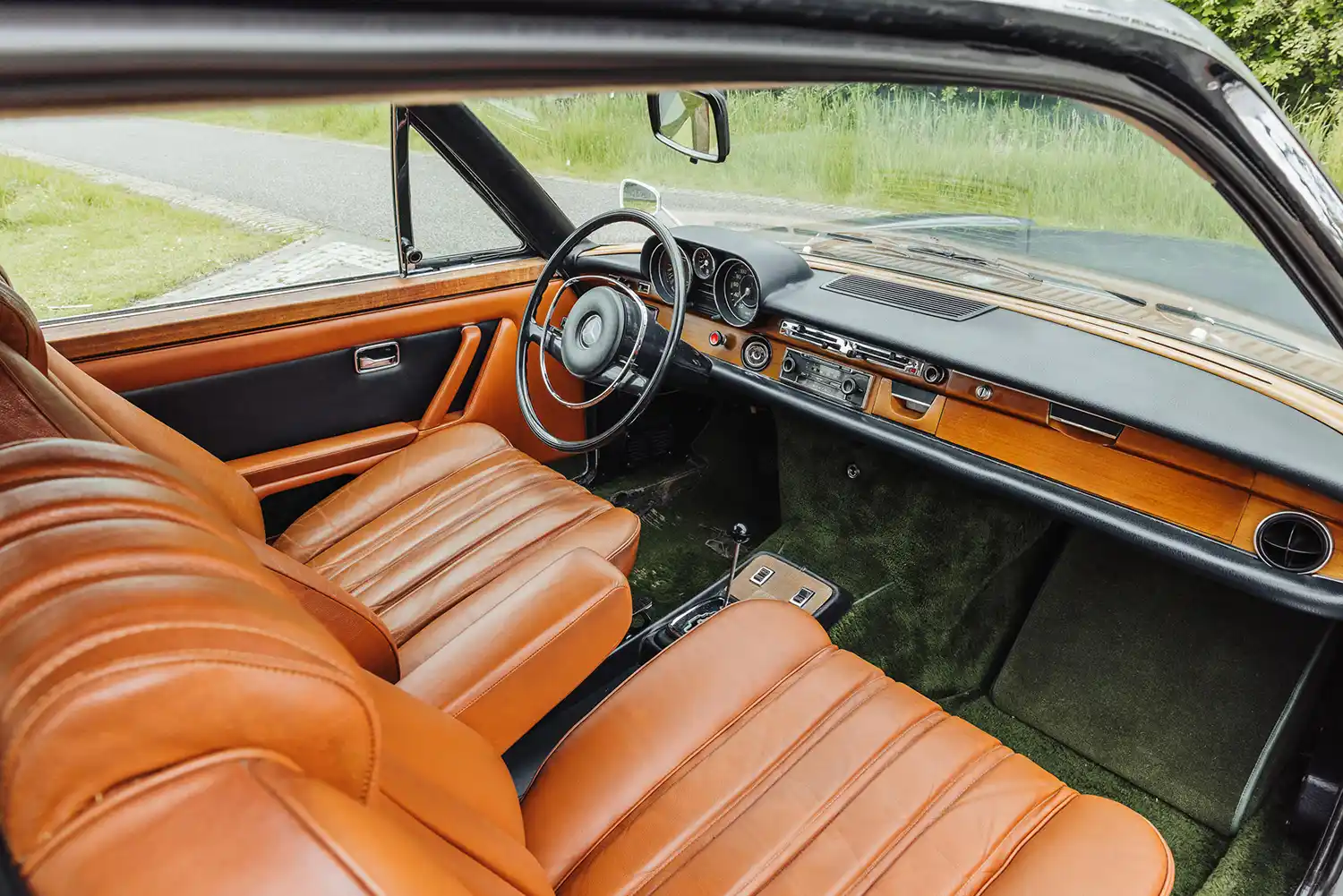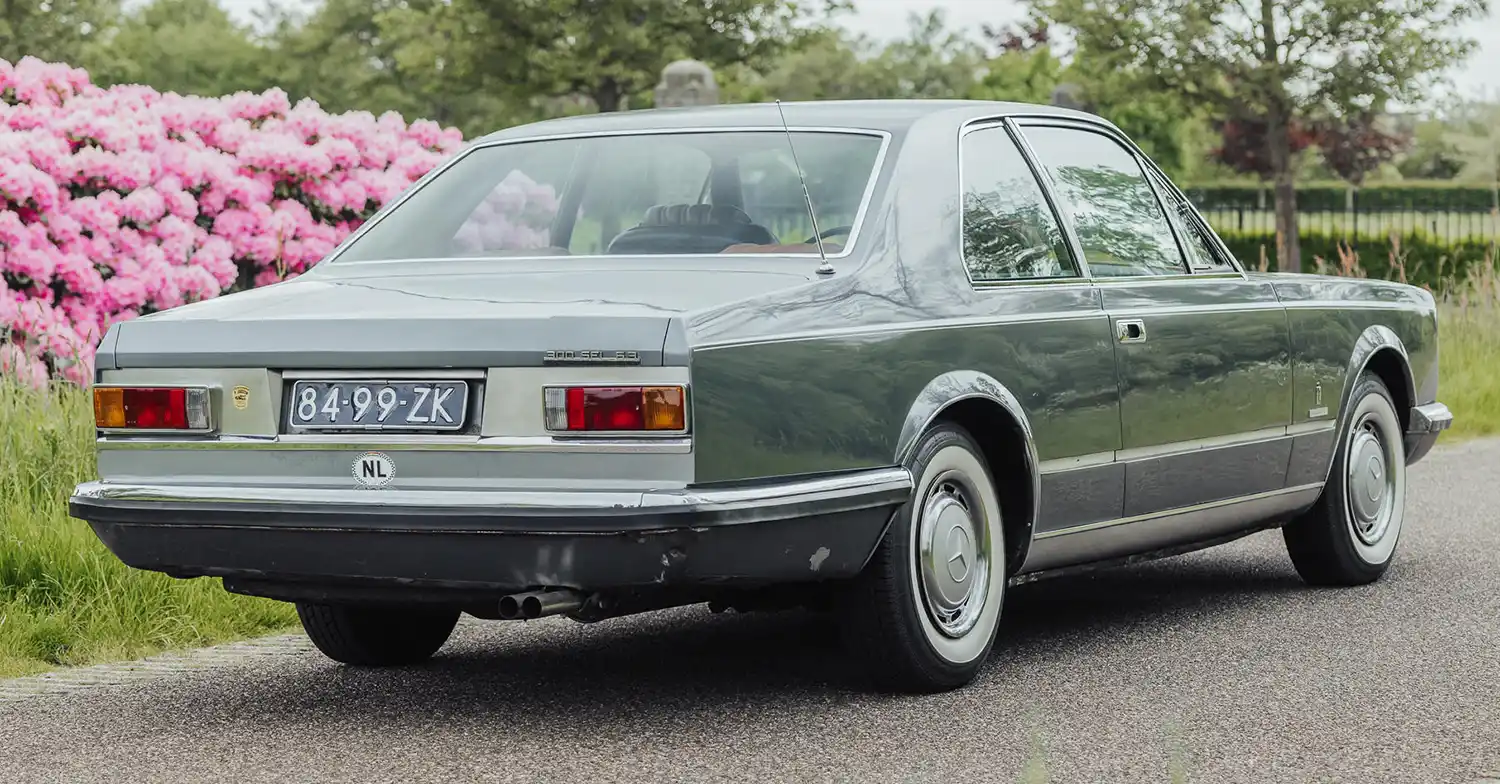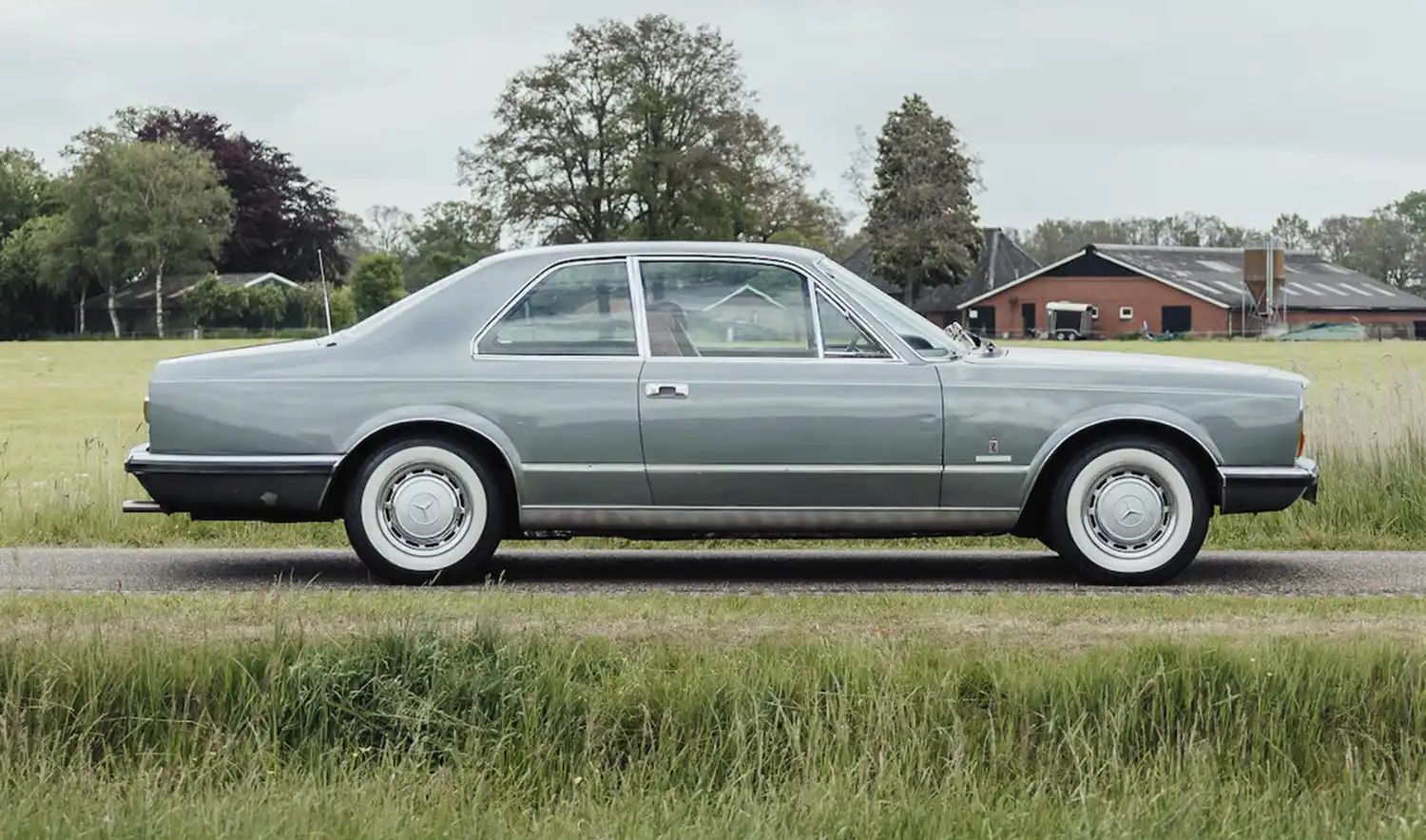
Source: Bonhams
Building on the very successful W111 and W112 series, the first cars to be produced in greater numbers and achieve economies of scale production, Mercedes-Benz presented a newly developed luxury limousine in 1965 at the annual Frankfurt Motor Show. With production lasting until 1972 in Europe, and 1973 in North America, a total of more than 383,000 units of the W108 and W109 were built. Quickly changing fashion trends in the 1960s meant that the characteristic fintails of the W111 predecessor, penned by designer Paul Bracq, were lost on the W108 and W109. Other less visible exterior modifications included a lower body waistline and wider doors. The resulting design was a visibly more modern and sleeker car with a more spacious interior. The W108 was the normal wheelbase version, whereas the W109, built in much smaller numbers, offered a longer wheelbase.

The W108 and W109 were available with a variety of engines to choose from, most being delivered with in-line six-cylinder motors.
In 1966, in-house engineer Erich Waxenberger started work on a private venture that consisted in placing the massive 6.3-liter V8 from the brand’s 600 limousine into a W109 model’s engine bay. The long wheelbase version W109 turned out to be well suited for the large engine, resulting in a very luxurious vehicle offering impressive performance. After presenting the concept to the public at the 1968 Geneva Motor show, the automaker decided to put Waxenberger’s idea into production and between 1968 and 1972, a total of 6,526 of these luxury limousines with near muscle car performance were delivered to wealthy clients.

At the time of its release, the 300 SEL 6.3 was among the fastest four-door production cars in the world and was easily capable of a cruising speed of 125mph (200 km/h). In a 1968 feature of Road & Track, the magazine concluded the 300 SEL 6.3 was “merely the greatest sedan in the world”. The writers, impressed by the automobile’s power, even took the car to a drag race at Orange County International Raceway, where it was only beaten by a 427 Corvette.
Though costly to maintain, the 300 SEL 6.3 is a highly collectible automobile in today’s discerning market.

THE CAR OFFERED
The car on offer here was an individual commission spanning over multiple years and costing the Dutch businessman behind the commission, whose name remained a closely guarded secret for a long time, a total of 400,000 Dutch guilders, the equivalent of approximately 83 Volkswagen Beetles.
The story of this unique 300 SEL 6.3 began when a Dutch lithograph company owner, impressed by Mercedes-Benz’s new flagship model, approached the automaker in 1968 asking them whether they intended to launch a convertible version. The answer from the Mercedes design department was a clear no, the marque additionally refusing to sell a rolling chassis to the client. A subsequent request for a coupe version was also declined.

The Dutchman then tried his luck by reaching out to Dr Uhlenhaut directly, again asking for a rolling chassis so he could have a body of his own design built around the car, to no avail. The original correspondence between the Dutch citizen and Mr Uhlenhaut is on file and makes for an interesting read. He then decided to contact Pininfarina in Turin, while still negotiating in parallel with Mercedes to be able to purchase a rolling chassis. After multiple unfruitful attempts, one can start to feel the Dutchman’s frustration when reading the original correspondences (“Mr Uhlenhaut is very stubborn”), he proceeded to purchase a standard 300 SEL 6.3 with the idea of having the car modified. Mercedes refusing to put anything but its four-door body on the W109 chassis, he decided to request Sergio Pininfarina to come up with a 2+2 design for his Mercedes.
Initially, the carrozziere from Turin refused, claiming the chassis was not stiff enough and should be shortened by Mercedes-Benz. After some back and forth, Pininfarina agreed to rebody the vehicle if the Dutch man would bring the Mercedes to Turin. The Italian coachbuilder quoted the client a total cost of 10,000,000 Lire, to which the lithograph company owner promptly agreed.

The Dutch entrepreneur consequently had a lot of individual requests, all documented on the fascinating original correspondences that come with the car. He wanted to sit high “like in a Rolls-Royce” and wanted Pininfarina to limit the glass surface, “we don’t like to sit in an aquarium”. Additionally, the back seat had to be movable and not divided by a fixed armrest. Other interior modifications had to include insulation so that the noise level would be limited. Finally (though this arrangement was slightly changed in the end), the Dutch citizen suggested to send the vehicle directly from Stuttgart to Italy and import it to the Netherlands after completion where he would then proceed to pay “enormously high (import) taxes”. Some things never change.

Upon completion of the unique 300 SEL 6.3, Pininfarina showed the car on its stand at the Paris Motor Show in 1970, the happy client confirming “he liked it immensely” in another correspondence. Press reports at the time were minimal with many voicing skeptical opinions. The German magazine Auto Motor & Sport only mentioned the creation as being a one-off for a Dutch customer. Given that the owner’s name was never mentioned, rumors started to abound as to who commissioned the vehicle, some even citing beer magnate Freddy Heineken as the man behind this unique creation.
On February 10, 1971, the Dutchman’s chauffeur finally took delivery of the car and drove it back to Holland.

As is so often the case, tastes can change rapidly, and it turned out that the owner’s wife was not a fan of the Mercedes. In 1972, original owner decided to contact Auto Becker in Germany to inquire about the possibility of a sale. The car had only covered 10,000 kms at this time and was described by the seller as “the most exclusive car in the world with the best performance”. Becker, skeptical about the 70,000 DM price tag asked by the seller, did not manage to find a buyer. After a few months of corresponding, with the seller becoming frustrated with the stalling sales process, the relationship somehow cooled off. The Mercedes was eventually brought back to the owner’s residence and was purchased by another Dutch citizen in 1973. The Benz has subsequently spent all its life in the Netherlands.

While the styling of the body may be subject to discussions and divided opinions, the quality of the materials used for the interior are unmatched. Presented with a charmingly patinated cabin, the Pininfarina one-off will require some recommissioning work on body and mechanicals. Once completed, it would not look out of place at the most exclusive Concours d’Elegance.
Offered with a comprehensive history file and Dutch registration, this fast, comfortable, and absolutely unique vehicle represents a rare chance to bid on a truly outstanding piece of German-Italian design.

Coachwork by Pininfarina
Chassis no. 100981-12-004017
Engine no. 109018-12-003924
Mechanical Fuel Injection
300bhp at 4,100rpm
4-Speed Automatic Transmission
4-Wheel Independent Suspension
4-Wheel Disc Brakes

*The only Pininfarina-bodied 300 SEL 6.3 ever produced
*Incredible file of correspondences between Uhlenhaut, Pininfarina and the owner
*Substantially lighter than the factory sedan
*Nicely preserved and unrestored




























The post 1969 Mercedes-Benz 300SEL 6.3 2+2 Coupe Coachwork by Pininfarina appeared first on Wheelz.me-English.




